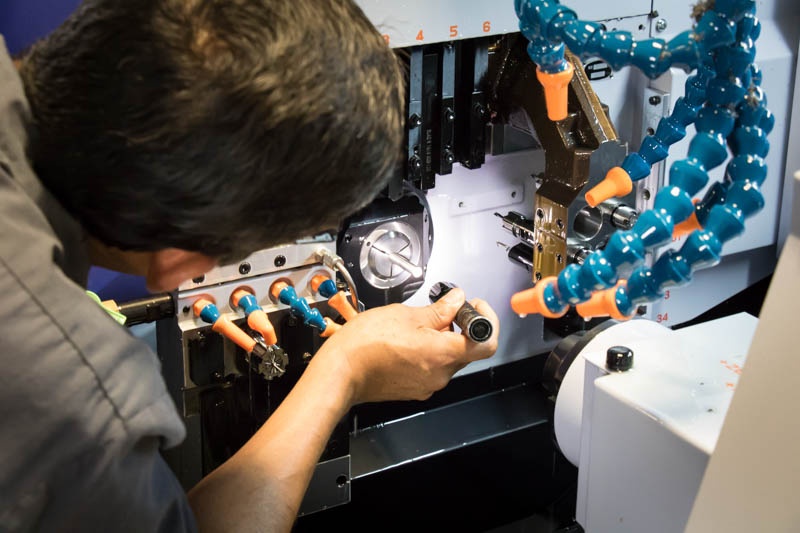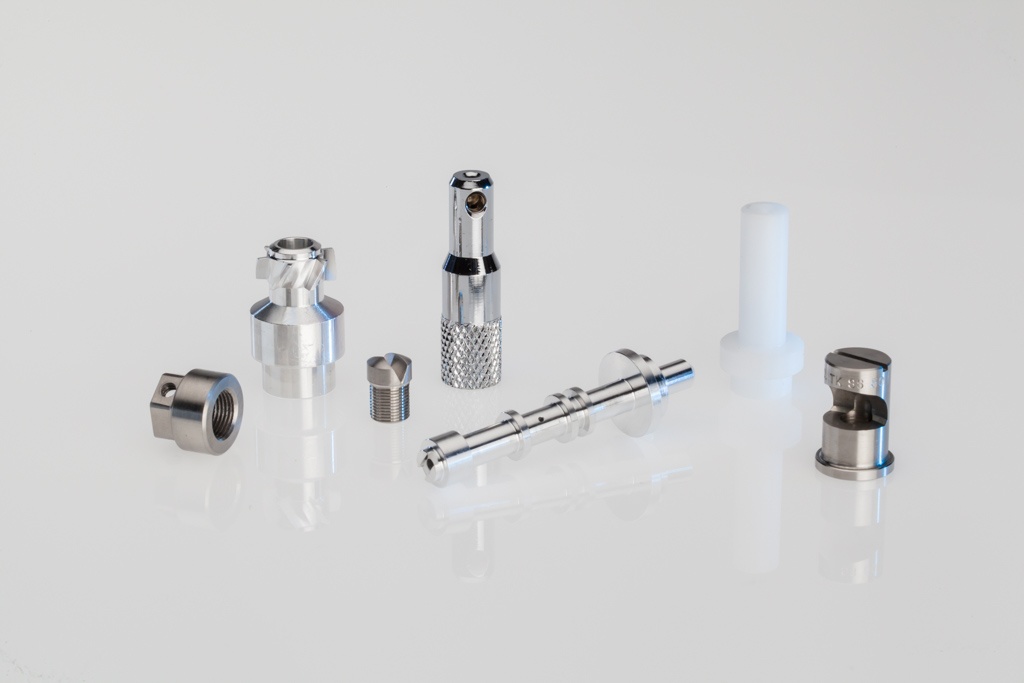Swiss screw machining was invented in 1865
and today is even better with CNC programing and automation
 Screw machines were first invented in 1865 to efficiently produce watch parts by turning round bar stock and machining the rotating bar with special tooling. The original equipment, patented first by Brown & Sharpe, is a turret style automatic screw machine. It was called a screw machine because it originally was used to make screws and pins, though it has been adapted to make many other kinds of parts. As you may guess, this technology started in Switzerland for the production of famous Swiss watches. Today there are many kinds of screw machines for various types of parts and volumes. Some have CNC (computer numeric control) functionality for mass production of complex parts.
Screw machines were first invented in 1865 to efficiently produce watch parts by turning round bar stock and machining the rotating bar with special tooling. The original equipment, patented first by Brown & Sharpe, is a turret style automatic screw machine. It was called a screw machine because it originally was used to make screws and pins, though it has been adapted to make many other kinds of parts. As you may guess, this technology started in Switzerland for the production of famous Swiss watches. Today there are many kinds of screw machines for various types of parts and volumes. Some have CNC (computer numeric control) functionality for mass production of complex parts.
CNC Swiss screw machines, also called CNC turning machines or lathes, function with a disc cam that rotates tools to work bays within the machining center. The disc cam moves the production part along the tool so that machining always takes place very close to the spindle collet. This is different from other kinds of lathes where the bar stock rotates and the machining can take place anywhere along the stock. When the machining is near the spindle collet, it allows the machine to produce parts with very close tolerances. There is less vibration along the part length as compared with a turret style lathe which has tools move to the rotating part. Because of this, Swiss machining is very good for parts that are long (in comparison to the diameter) with tight tolerances.

This is the inside of a STAR 20 mm Swiss screw machine. The 20 mm refers to the maximum size bar that can be fed through a collet. Swiss screw machines come in various sizes that are optimal for different size parts. The largest size part for Swiss is around 1.5" maximum outer diameter. The machinist is shining his light on the bar stock that will be rotating and articulating according to the program. Right above the bar are the stationary tools that will meet the bar, you can see the orange numbers referring to the slot position. The more tooling slots available, the more complex the part the equipment is capable of making. The blue and orange hoses spay coolant on the part as it is being turned. High pressure hoses move the heat away the fastest, allowing for greater speeds and feeds.
Swiss machines come with a variety of tooling options, depending on the make and model. When looking for Swiss screw machining services, it's great to work with a company who has various types of machines.
This equipment differs from CNC turning centers that have the tooling move to the bar. The less distance a tool is from the workpieces, the less time it takes to make the parts.
Swiss screw machined parts frequently:
- Have a higher length to diameter ratio - long parts that need to be straight
- High quality finishes
- Quantities over 1,000 needed at a time, cost goes down as production goes up
- Both milled and turned, there are features that require more than just turning

Pioneer Service offers CNC Swiss screw machining for a wide range of industries. If you think your custom part should be made with Swiss screw machining, send us your print and we'll let you know what is possible!





